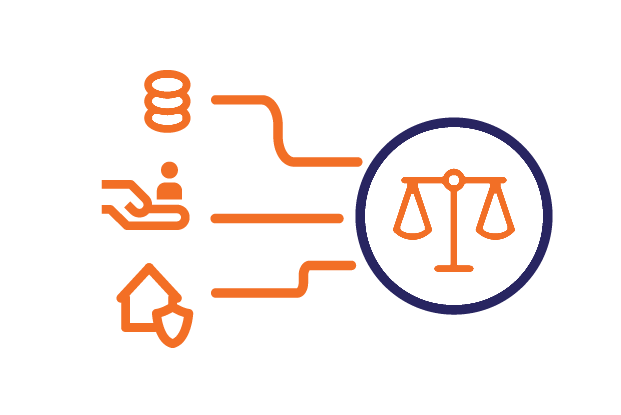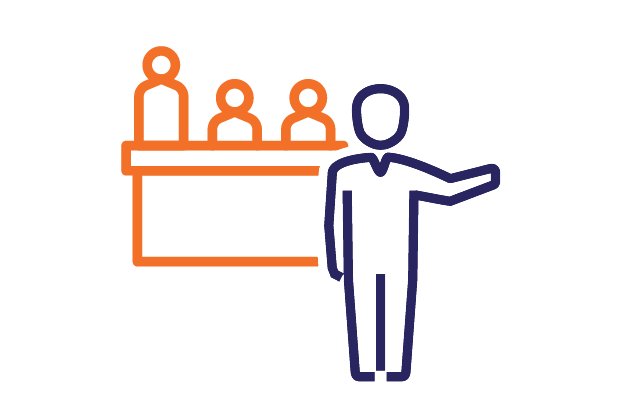Justice services are often very personal in how they are delivered. Judges develop their own ways of talking with the parties during a court hearing, which is the key moment when they can influence them. This can in turn increase the resolution rate of the court service and the quality of the outcomes it delivers. An online platform referring people to lawyers is only as effective as the lawyer who handles the case, and each lawyer develops an individual approach.
Scaling implies standardisation and effective outcomes, which is closely linked to evidence-based practice and to financial sustainability. Better quality services are more likely to lead to a revenue model that is sustainable and scalable. Users, governments and communities are more likely to pay for a service that actually solves most land problems. This, in turn, will provide a better business case for investments, which could be either public, private or mixed.
Solutions that work increase resolution rates. Outcomes are well-defined and monitored, making the quality of the service visible.
Standardised, effective treatments also need to be delivered through standardised channels. The user-facing side can be a justice worker in a community or a website. Additional assistance can be organised through a telephone, help desk, or chat function. The guideline for treating the justice problem needs to be translated into practical steps for employees, including scripts for key interactions with users. Once tasks are defined and allocated, the time that they take can be estimated. This further standardisation can lead to efficiency gains.
At the same time, the individual person seeking justice should feel heard and be served as an individual person. Justice problems often have high impact and cause distress. People need to feel heard and want to be respected. This is a challenge for any court, police station or startup delivering justice services.
At the same time that the service is standardised, each user needs to feel respected as an individual. This individualisation should be built into every delivery model for justice services. Disrespect is the most common feeling associated with an injustice. So for justice services, treating customers respectfully and not as a case or a number to be processed is particularly crucial. Effective legal help offered online should be combined with options in-person assistance, for example.
In order to benefit from it, sers need to know that a service exists. Individually, they are unlikely to encounter more than one land problem, one major crime issue or one separation in their lifetime. Searching on the web or consulting friends should lead them to the game-changing service. Substantial investments in marketing are needed for this. Currently, people go to many different agencies and individual service providers, each trying to compete for attention online or in communities. Widespread awareness can be achieved, however. Colombia’s houses of justice are known by 70-80 percent of the population, even though only 2 percent of the population (10 percent of the poor) use them.
Awareness on its own is not sufficient. Game-changing services need to develop a very clear value proposition. In HiiL’s work with justice innovators, this has proven to be an important element bringing a service to scale. gamechangers aim to offer a standardised service with a high resolution rate. Instead of telling a client that he or she may either win or lose the case depending on how a judge sees it, the service providers should try to be as clear as possible about outcomes.
People would not be referred to an excellent lawyer, but rather learn about what the service will aim for. The value proposition for a one stop procedure for land conflicts could include a stable agreement about rights of use and ownership. A defendant struggling with substance use and repeated justice system involvement would like to know what a problem-solving process would deliver for him. How would his life change after participating in the process?
The value proposition of justice services provided by courts needs the most work. Judges routinely tell parties to conflict that a decision will not solve their problem. Prosecutors in the US, Uganda and in every country in between talk about diversion, suggesting that the service that the court provides is not effective. Community justice services, by contrast, have a more convincing value proposition: a peaceful resolution that restores social harmony and is supported by the community.







